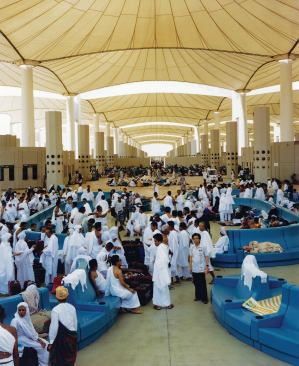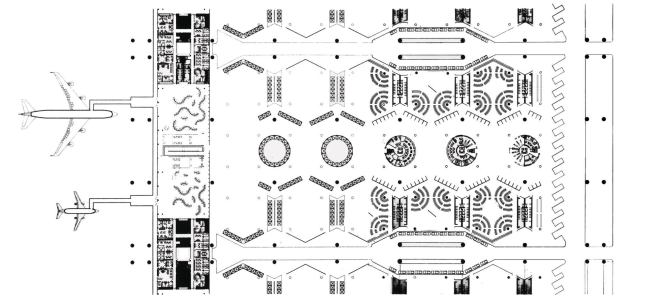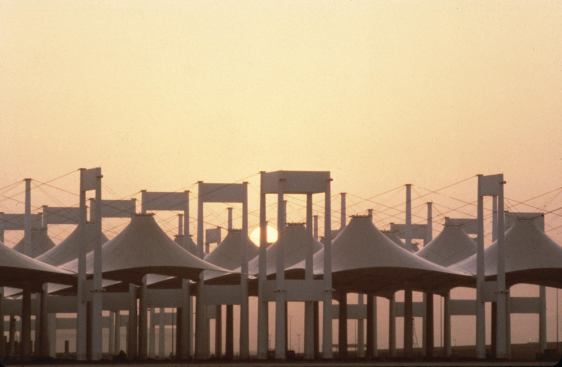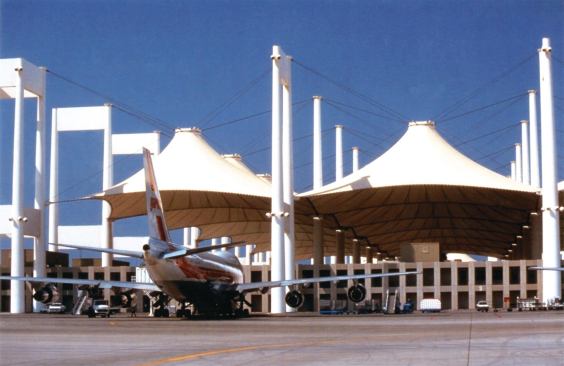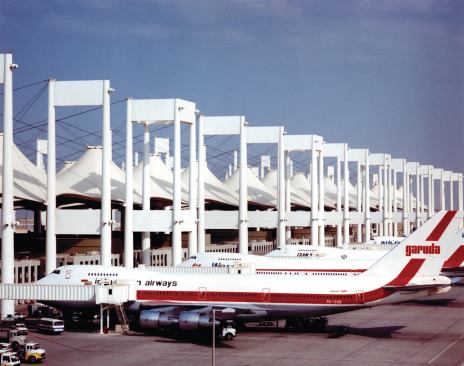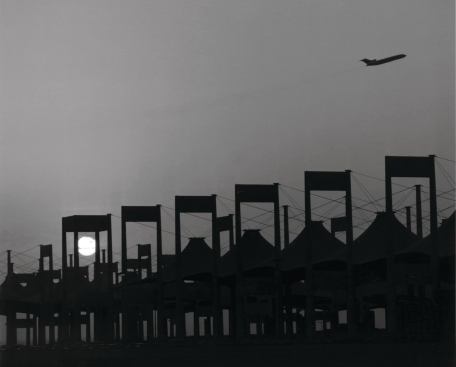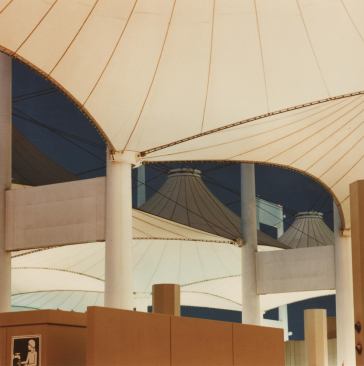SOM | Jay Langlois © Owens Corning
Under the canopy.
The white rectangles of the Hajj Terminal at King Abdul Aziz International Airport in Jeddah, Saudi Arabia, are visible from cruising altitude. Their vastness meets a need that first became apparent when jumbo jets began delivering unprecedented numbers of pilgrims for the hajj, the Muslim ritual journey to Mecca. A new type of passenger terminal was necessary to accommodate about 1 million hajjis passing through the airport over a one-month period annually, often pausing here up to 36 hours before and after the ground trips linking them to their ultimate goal.
To grapple with this unique problem, Saudi authorities turned to Skidmore, Owings & Merrill, which organized a design process led mainly by two renowned partners, architect Gordon Bunshaft and engineer Fazlur Khan. The resulting proposal parks the planes at relatively modest passenger-processing buildings at the edges of two open-air shelters that flank a ground-transportation roadway, each measuring 1,050 by 2,250 feet. Each shelter is composed of 105 square modules capped by a Teflon-coated fiberglass fabric canopy, which is supported on 147-foot-tall pylons. The scheme was no facile allusion to the region’s traditional tents, but a product of up-to-the-minute technology.
One of the few non-Muslims to visit the terminal, I can attest to its extraordinary environmental performance. In the October 1984 issue of Progressive Architecture, I wrote, “The fabric roof filters the desert sun to yield soft, modulated light and remarkably comfortable temperatures, even on a July day.” I was hardly alone in my admiration. The completed project earned both an AIA National Honor Award and an Aga Khan Award, as well as this year’s AIA 25-Year Award.
